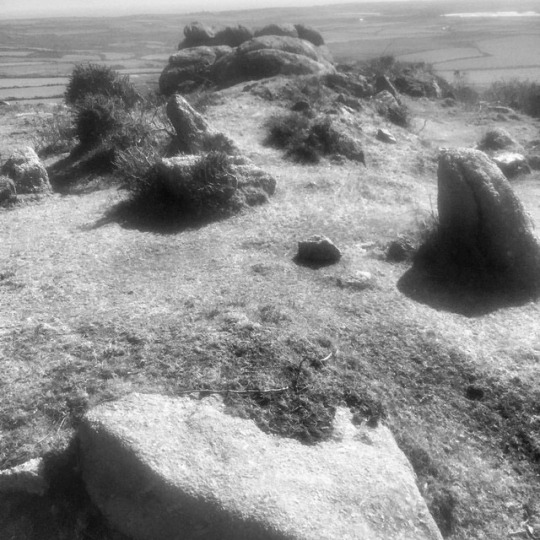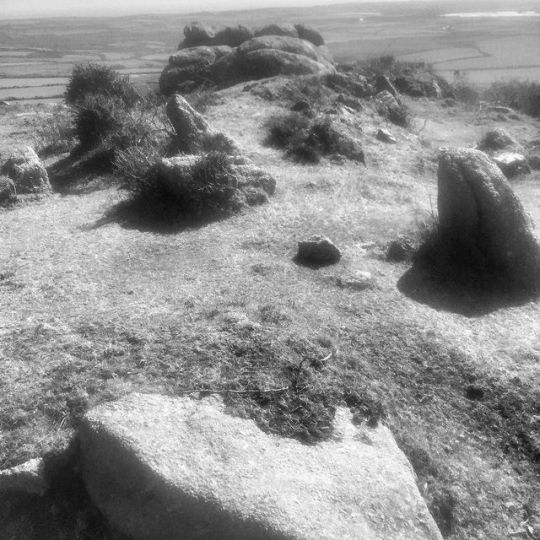#Long_Barrow
Photo

Dolmens of Ancient Korea
Dolmens (in Korean: koindol or chisongmyo) are simple structures made of monolithic stones erected during the late Neolithic period or Korean Bronze Age (1st millennium BCE). In ancient Korea they appear most often near villages and the archaeological finds buried within them imply that they were constructed as tombs for elite members of the community. Over 200,000 megalithic structures have been recorded in Korea with 90% of them in South Korea where they have the status of protected monuments. Most of the stones used are massive with the largest example found being 5.5 metres wide and 7.1 metres tall, and many weigh over 70 tons.
Continue reading...
#Bronze_Age#Carnac#dolmen#Korea#Korean_Architecture#Locmariaquer#Long_Barrow#Menhir#Neolithic#Tracker_Korea#history
177 notes
·
View notes
Photo

_chapel carn brea _neolithic long barrow or cairn. this unique monument sits on the crest of this last hill on west penwith peninsula or the first on uk's land mass if you were travelling up from the iberian coastal waters. an important site that includes many bronze age round barrows and is still use today as a fire beacon to celebrate the annual celestial and seasonal changes. the extant remains comprise an elongated stony mound, oriented NNW to SSE, situated on a crest above a slight southern slope, thus giving panoramic views towards the south east and over the western seaward side. It is 26m long and varies between 5.0m and 6.0m wide. the northern 11m comprises a flattened mound of small tightly packed stone measuring 1.3m wide and stands 0.9m high for some 6.5m. the long cairn then drops in a step of 0.3m to 0.4m and for the northernmost 4.5m the top broadens to 3.2m. seven earthfast stones occur at irregular intervals by the edge of the flat top and towards the perimeter of the mound. these average in protrusion 0.1m to 0.3m but one of two leaning stones is 0.9m high. quinnell writes that there are at least seventeen displaced blocks or slabs averaging 1.0m long and 0.7m wide on the mound and around its perimeter, but there are no obvious sockets to confirm them being the fabric of a displaced kerb. extending southwards for 15m lies a mass of horizontal outcrop. Initially level with the stone mound, this rises 1.7m above it and at the southern end is 3.0m above the present ground level. for 6.0m along the axis small stones have been packed against and into crevices of the outcrop. #neolithic #long_barrow #archaeology #chapel_carn_brea #outcrop (at Chapel Carn Brea)
0 notes
Photo

_chapel carn brea _neolithic long barrow or cairn. this unique monument sits on the crest of this last hill on west penwith peninsula or the first on uk's land mass if you were travelling up from the iberian coastal waters. an important site that includes many bronze age round barrows and is still use today as a fire beacon to celebrate the annual celestial and seasonal changes. the extant remains comprise an elongated stony mound, oriented NNW to SSE, situated on a crest above a slight southern slope, thus giving panoramic views towards the south east and over the western seaward side. It is 26m long and varies between 5.0m and 6.0m wide. the northern 11m comprises a flattened mound of small tightly packed stone measuring 1.3m wide and stands 0.9m high for some 6.5m. the long cairn then drops in a step of 0.3m to 0.4m and for the northernmost 4.5m the top broadens to 3.2m. seven earthfast stones occur at irregular intervals by the edge of the flat top and towards the perimeter of the mound. these average in protrusion 0.1m to 0.3m but one of two leaning stones is 0.9m high. quinnell writes that there are at least seventeen displaced blocks or slabs averaging 1.0m long and 0.7m wide on the mound and around its perimeter, but there are no obvious sockets to confirm them being the fabric of a displaced kerb. extending southwards for 15m lies a mass of horizontal outcrop. Initially level with the stone mound, this rises 1.7m above it and at the southern end is 3.0m above the present ground level. for 6.0m along the axis small stones have been packed against and into crevices of the outcrop. #neolithic #long_barrow #archaeology #chapel_carn_brea #outcrop http://ift.tt/2miLlQs
0 notes